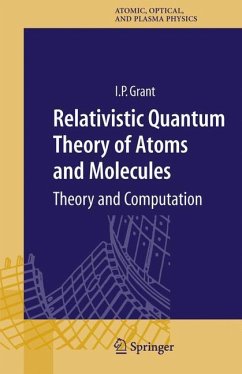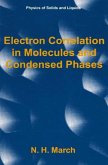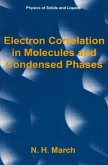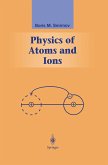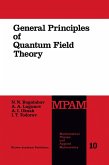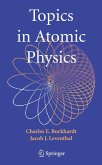Relativistic quantum electrodynamics, which describes the electromagneticinteractions of electrons and atomic nuclei, provides the basis for modeling the electronic structure of atoms, molecules and solids and of their interactions with photons and other projectiles. The theory underlying the widely used GRASP relativistic atomic structure program, the DARC electron-atom scattering code and the new BERTHA relativistic molecular structure program is presented in depth, together with computational aspects relevant to practical calculations. Along with an understanding of the physics and mathematics, the reader will gain some idea of how to use these programs to predict energy levels, ionization energies, electron affinities, transition probabilities, hyperfine effects and other properties of atoms and molecules.
From the reviews:
"Relativistic Quantum Theory of Atoms and Molecules is a book that should be on the desk of every atomic-physics student and research scientist. Written by a master of the field, it contains a wealth of information about relativistic atomic and molecular structures." (Walter Johnson, Physics Today, January, 2008)
"In the text, the presentation is usually well balanced, with words and formulas in an appropriate ratio; explanations are frequently supplemented by some sentences that aid the readers' orientation and motivation. Although the book is particularly tailored towards applications within atomic and molecular theory, several chapters may also be useful for readers whose interests embrace more general aspects of relativistic quantum mechanics. ... In summary, Grant's monograph is more than just a 'valuable addition' to the literature on relativistic atomic and molecular theory." (H. Hogreve, Mathematical Reviews, Issue 2012 c)
"Relativistic Quantum Theory of Atoms and Molecules is a book that should be on the desk of every atomic-physics student and research scientist. Written by a master of the field, it contains a wealth of information about relativistic atomic and molecular structures." (Walter Johnson, Physics Today, January, 2008)
"In the text, the presentation is usually well balanced, with words and formulas in an appropriate ratio; explanations are frequently supplemented by some sentences that aid the readers' orientation and motivation. Although the book is particularly tailored towards applications within atomic and molecular theory, several chapters may also be useful for readers whose interests embrace more general aspects of relativistic quantum mechanics. ... In summary, Grant's monograph is more than just a 'valuable addition' to the literature on relativistic atomic and molecular theory." (H. Hogreve, Mathematical Reviews, Issue 2012 c)

